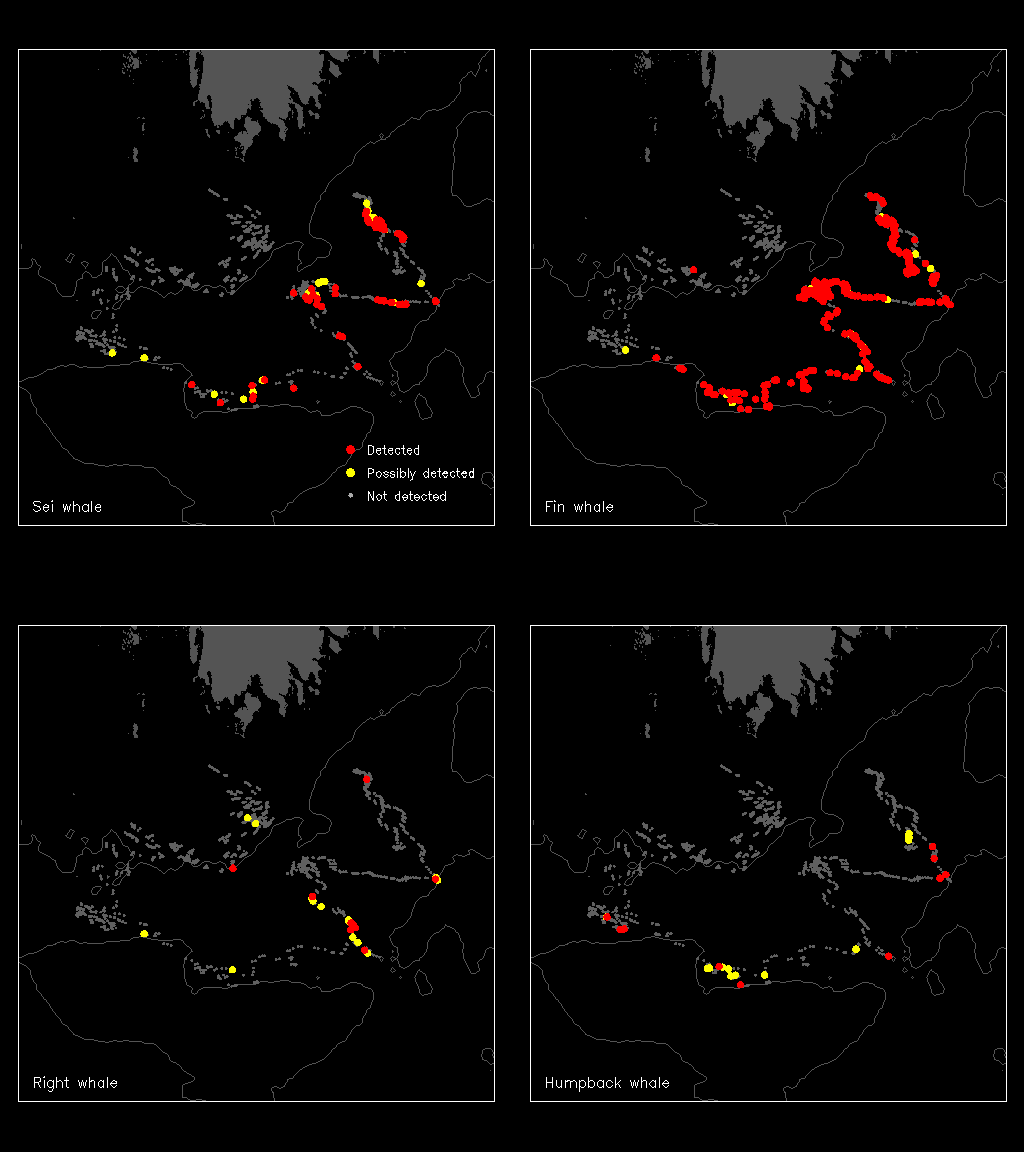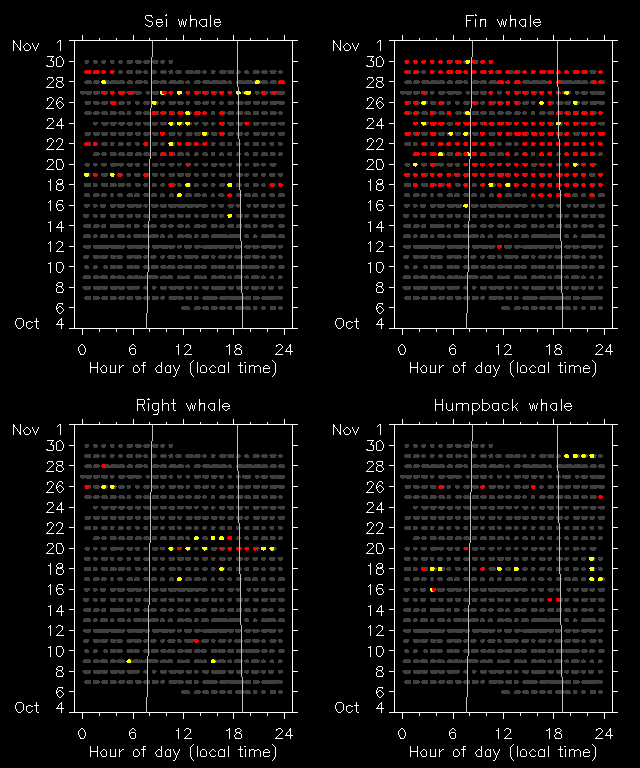Autonomous Real-time Marine Mammal Detections
Woods Hole Oceanographic Institution
Roseway Basin, Canada, October 2016
Study objectives
A Teledyne Webb Research Slocum glider equipped with passive acoustic listening device (DMON/LFDCS) was deployed in Roseway Basin to locate and study endangered right whales in their critical feeding habitat, as well as monitor other baleen whales and ocean noise.
Principal Investigators: Kim Davies, Chris Taggart, Hansen Johnson, Richard Davis (Dalhousie University), Moira Brown (New England Aquarium/Canadian Whale Institute), and Mark Baumgartner (WHOI)
), and Mark Baumgartner (WHOI)
Platform dal556
Platform location:

Daily analyst review:
| | Detected |
| Possibly detected |
| Not detected |
Analyst-reviewed species occurrence maps:

Analyst-reviewed time series:

Analyst-reviewed diel plot:

Links to detailed information for platform dal556:
Automated detection data
DMON/LFDCS diagnostics
Platform diagnostics
Questions
Please email Mark Baumgartner at mbaumgartner@whoi.edu. For a general desciption of the detection system and the autonomous platforms, visit dcs.whoi.edu.
Acknowledgements
The Dalhousie glider was expertly prepared by Adam Comeau, Sue L'Orsa, Hansen Johnson, and Richard Davis (Dalhousie University). Support for the deployment and operation of the gliders was provided by the Marine Environmental Observation Prediction and Response Network (MEOPAR) Whales, Habitat and Listening Experiment (WHaLE), the Ocean Tracking Network. MEOPAR-WHaLE is supported by 20 collaborating organizations, listed here: meopar.ca/research/project/whale-whales-habitat-and-listening-experiment. Support for the development, integration, and testing of the glider DMON/LFDCS was provided by the U.S. Office of Naval Research and the NOAA National Marine Fisheries Service Advanced Sampling Technologies Working Group in collaboration with the Northeast Fisheries Science Center's .Passive Acoustics Research Group (leader: Sofie Van Parijs).
Home



